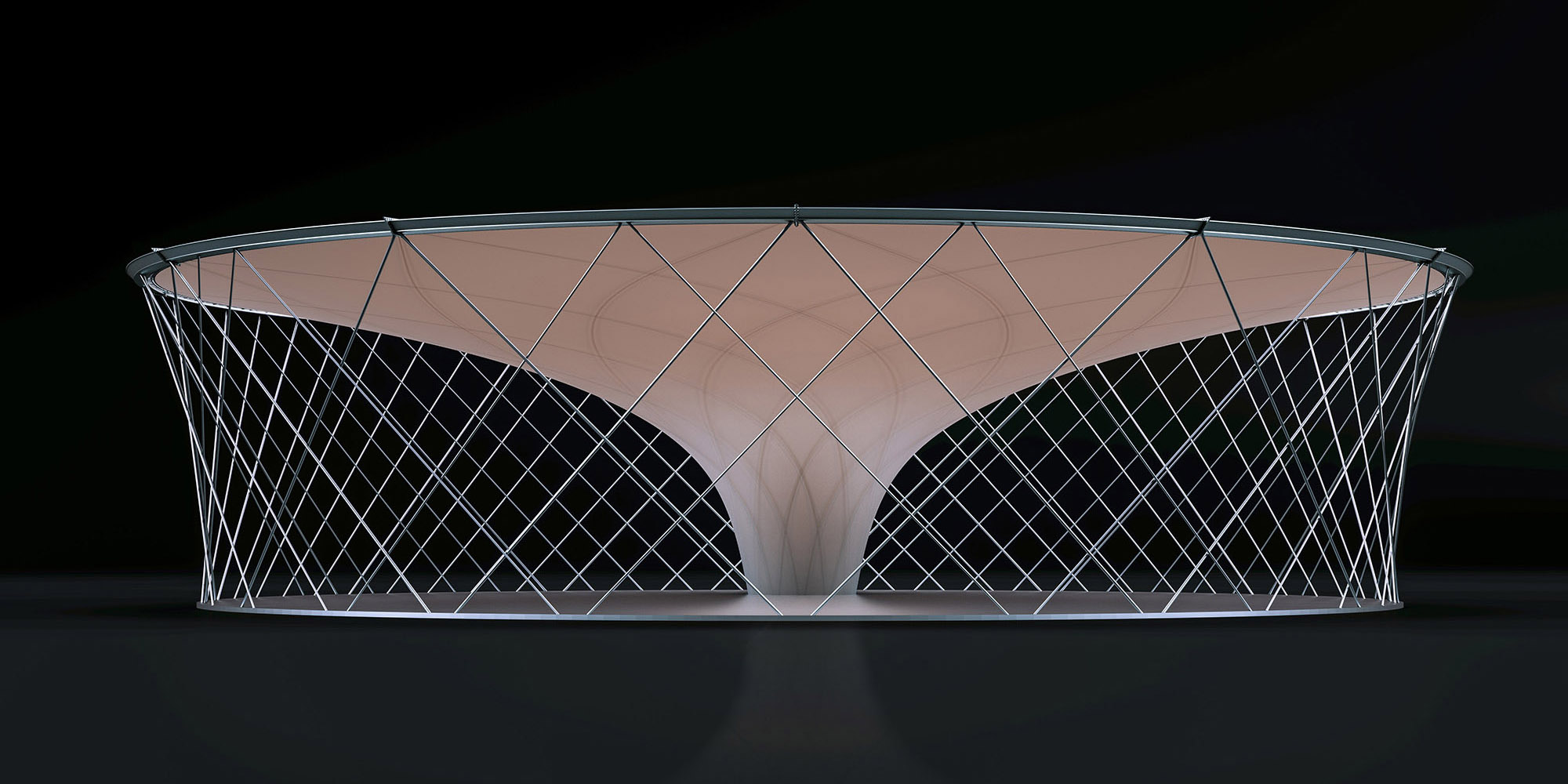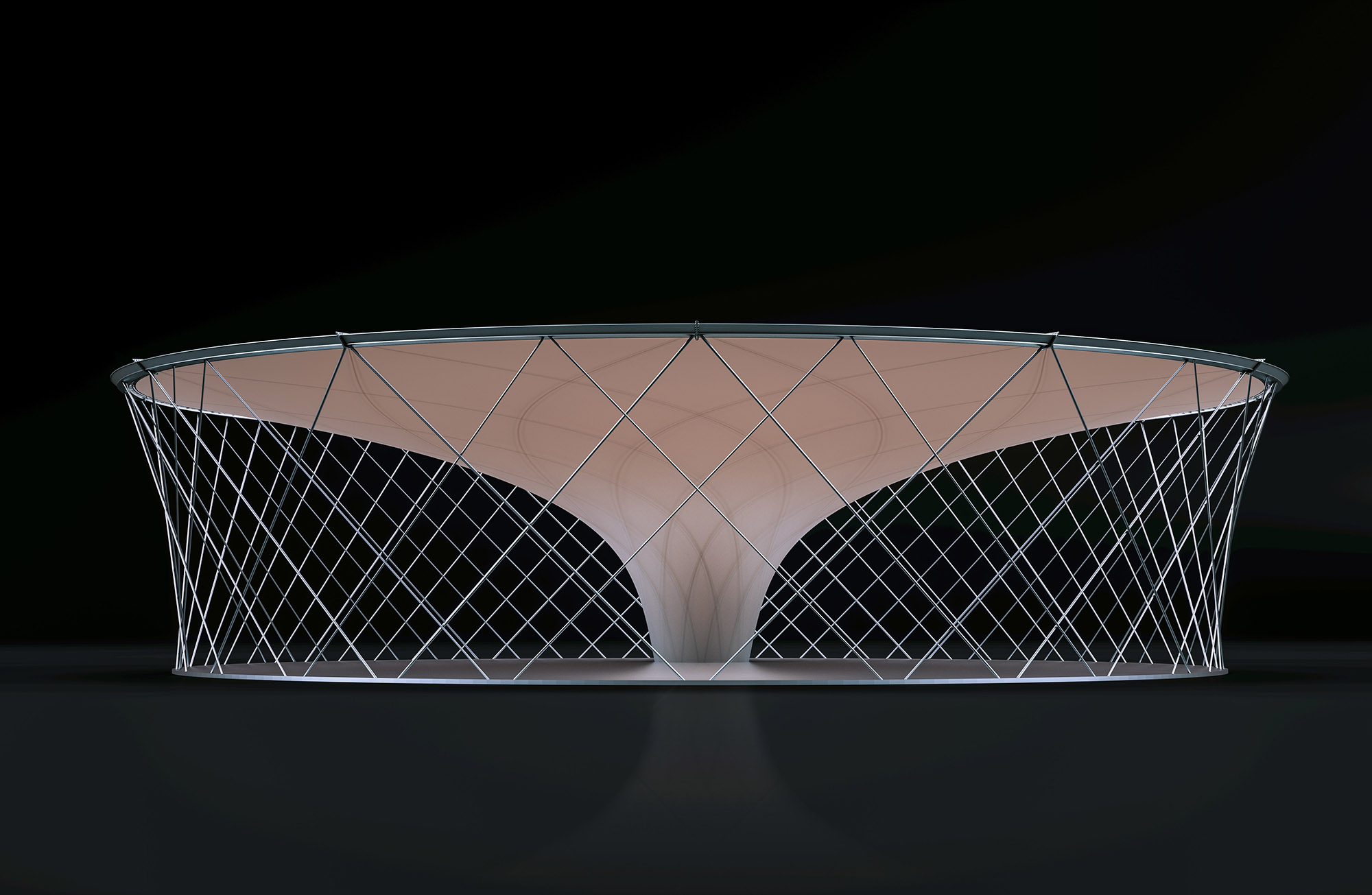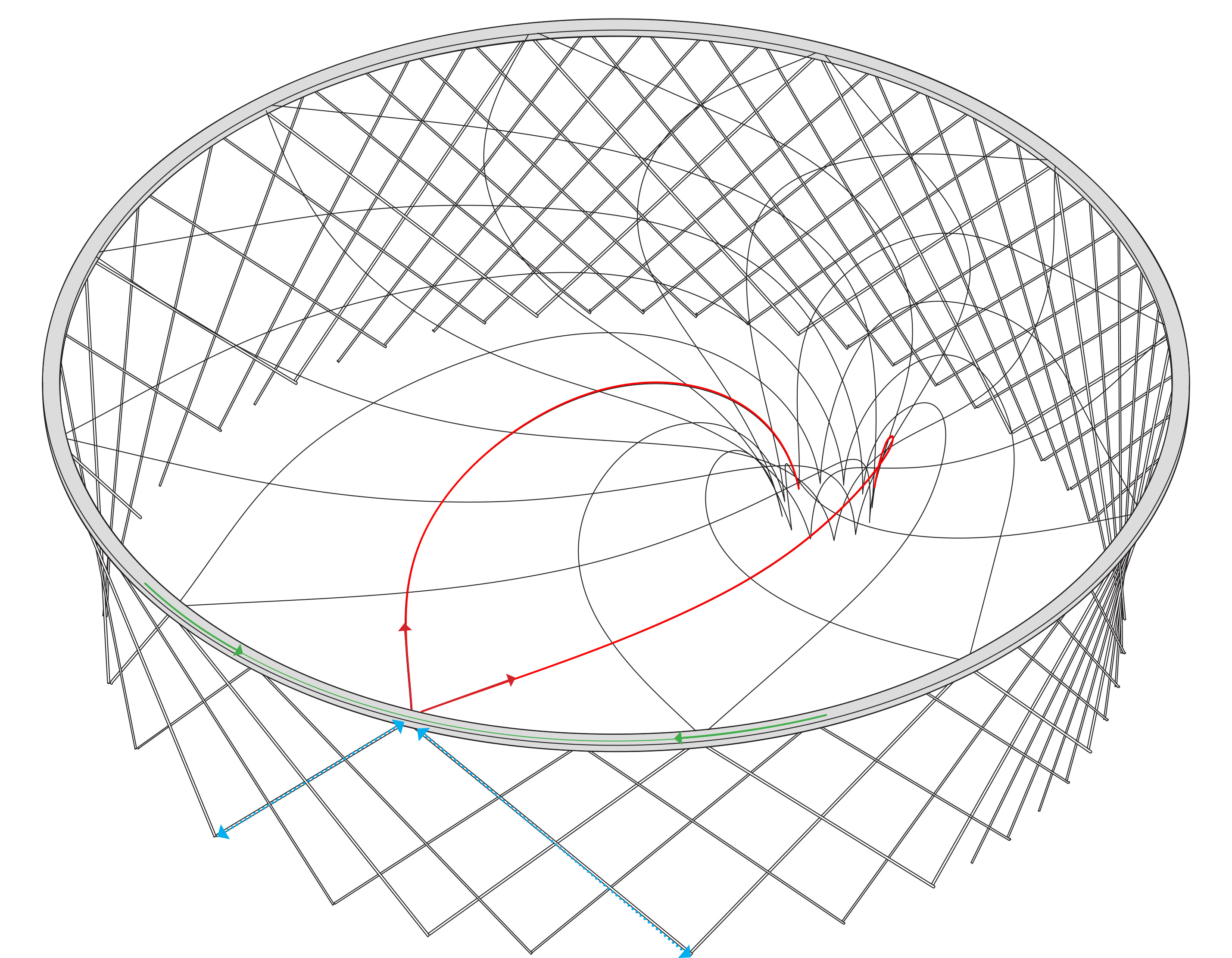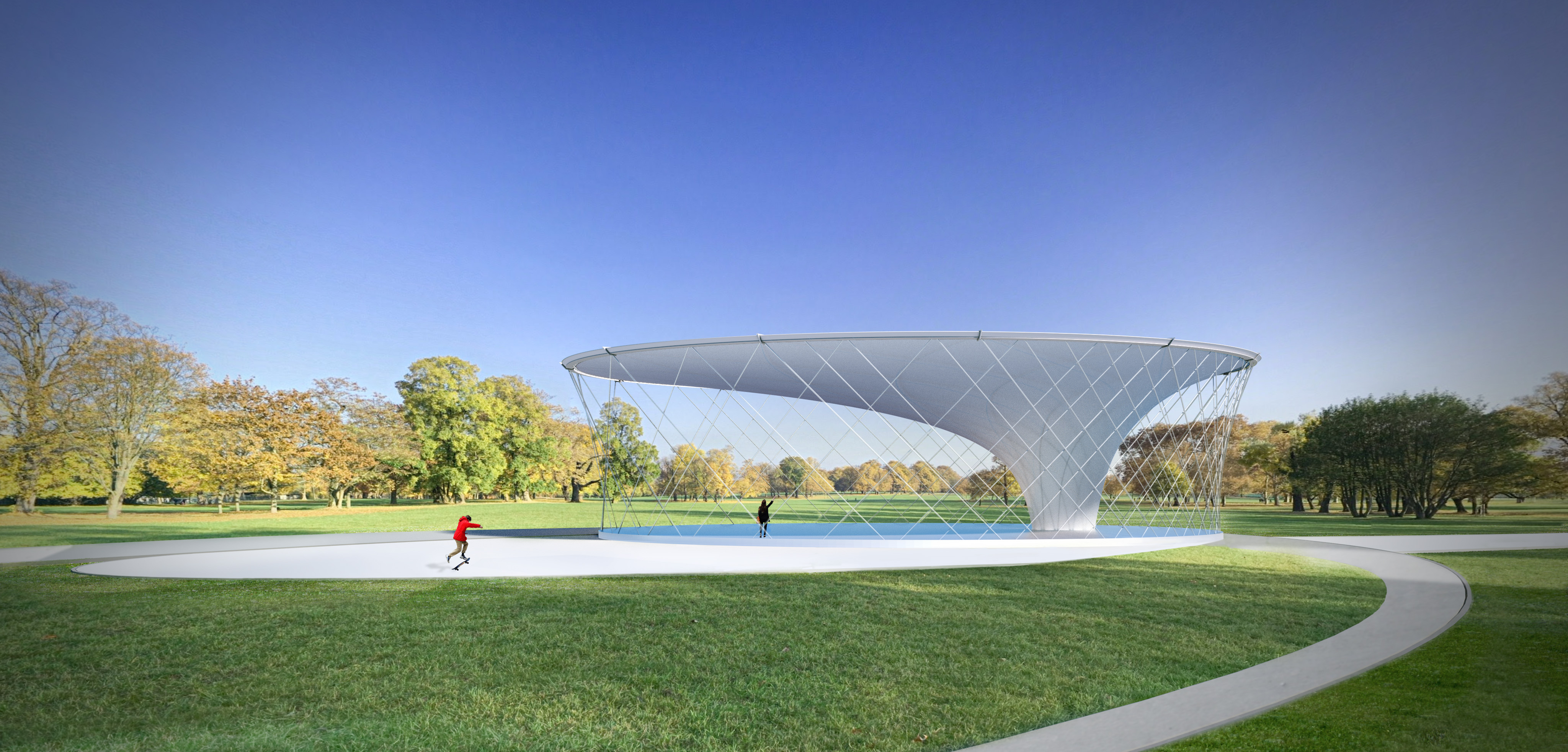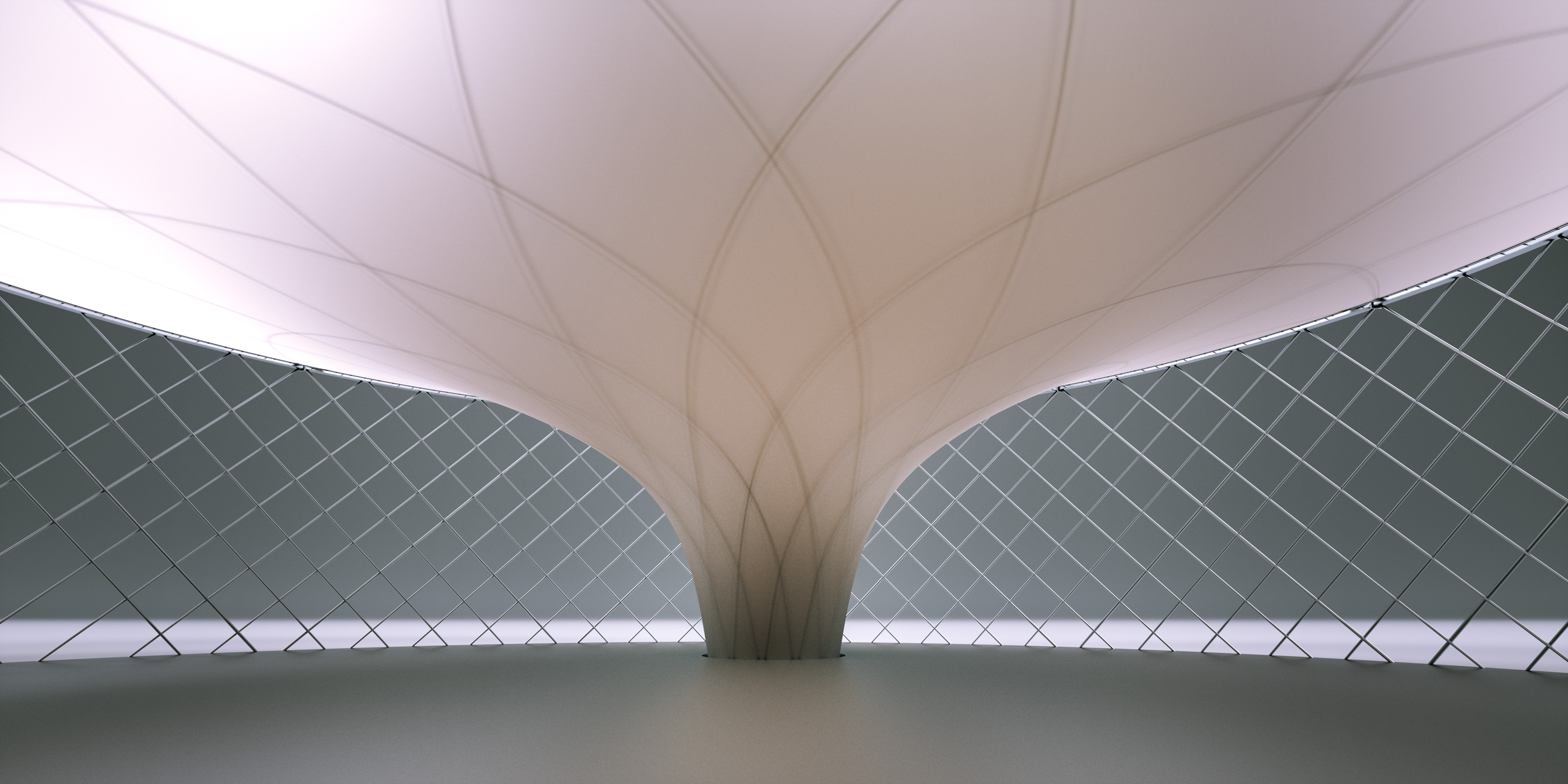The Flying Funnel aims to maximize its lightness by reducing its building elements to the core needs. Nonetheless, the proposed design seeks not to purely optimize its structural performance (as its main design driver), but it also aspires to provide architecture on a human scale – by calibrating its building components to tangible dimensions for its user. By combining complex methods of form-finding and structural analysis with a conscient attention for the detail, the design strives to invite its visitors to experience the space in the spirit of Frei-Otto.
The systems force flow can be abstracted into two main components, namely the horizontal and the vertical equilibrium. The horizontal component of the cable forces (originated from prestress and external loads) are balanced by the compressive force at the compression ring, generating a self-constrained force flow, where the forces find its balanced on a closed loop. The vertical component of the cable forces are transmitted via compression-ring to the façade rods and consequently to the supports. The vertical forces and the rod structural properties are calibrated to enable and enhance the bending-active properties of the façade.
The cable net topology results from an iterative process where different configurations were tested according to its performance on the membrane stiffening. Although different solutions would provide satisfactory structural results, the ‘cauliflower’ diagrid distribution has proven to be a very stable solution in terms of cable forces – virtually independently from the direction of the external forces acting the structure, the proportionality of the forces on the grid is almost unchanged from its original prestressed shape.
The project was awarded the Frei Otto Award 2017 from the Architects and Engineering Federation of Stuttgart AIV
.Competition, Stuttgart, Germany in collaboration with Ayuna Mitupova and Tiago Carvalho, 2017
